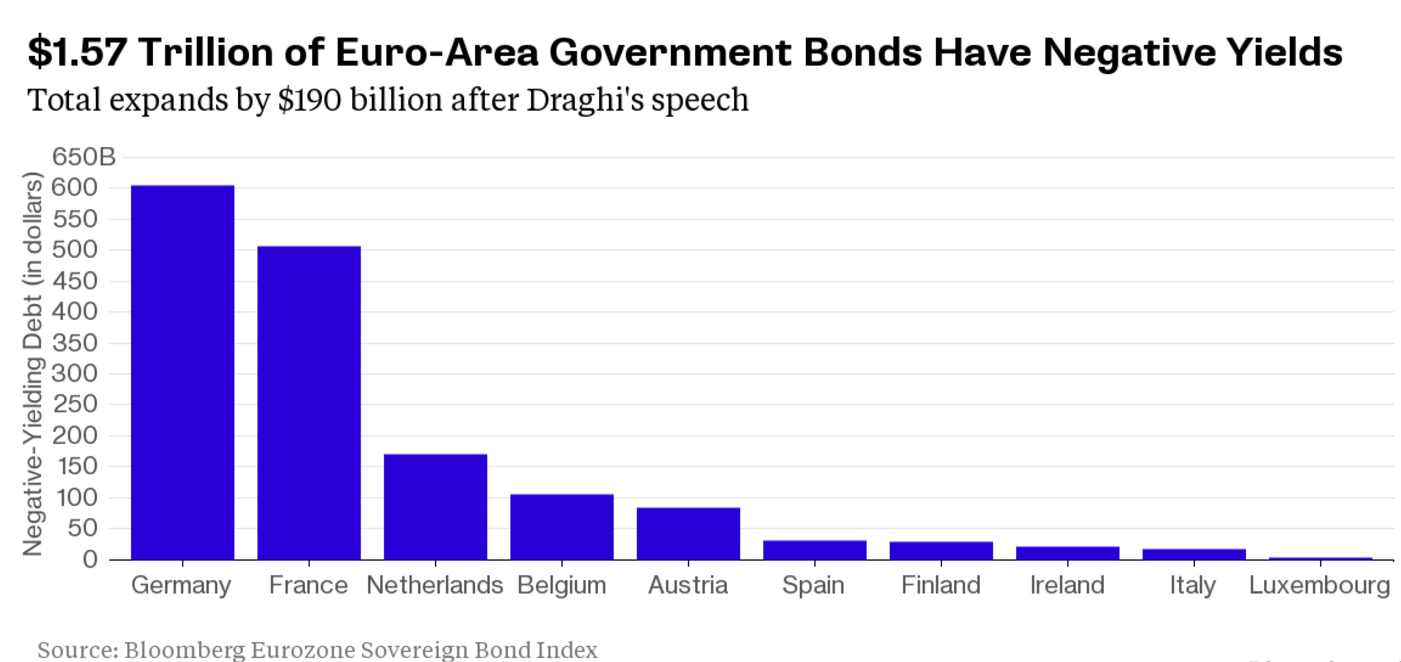ECB president Mario Draghi’s comments on 22 October that the ECB had discussed further quantitative easing by cutting the region’s deposit rate has resulted in a huge rally in euro-area bonds that has seen yields reach record lows. According to data from Bloomberg, another US$190bn of European bonds has moved into a negative yield taking the total to staggering US$1.57tn.
German bonds out to 6 years are now at negative yields and French and Spanish bonds hit two-year lows below zero. German 2 year bonds reached a record low of -0.348% before closing at -0.32%, French 2 year bonds reached a record low of -0.292% and Spanish bonds hit a record low of -0.02%.
Negative bond yields signal that investors will receive less money than they initially invested when the bond finally matures. There are several reasons as to why they would do this including investment mandates that dictate a fund must hold bonds, deflationary fears or simply accepting a poor return for the safety of getting the invested funds back. As the ECB has been buying around €60bn of bonds a month, the pool of bonds available for other investors has been shrinking, driving prices higher and yields lower.


